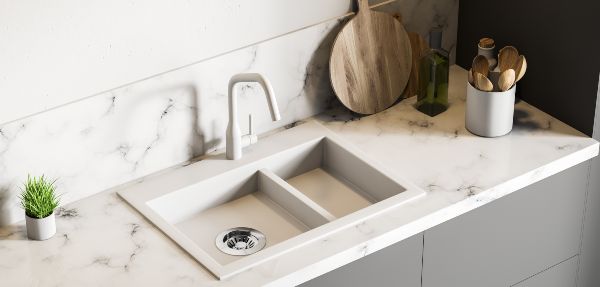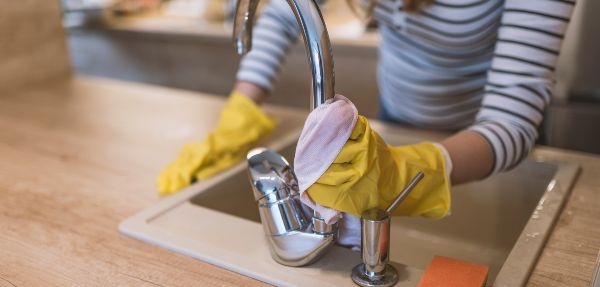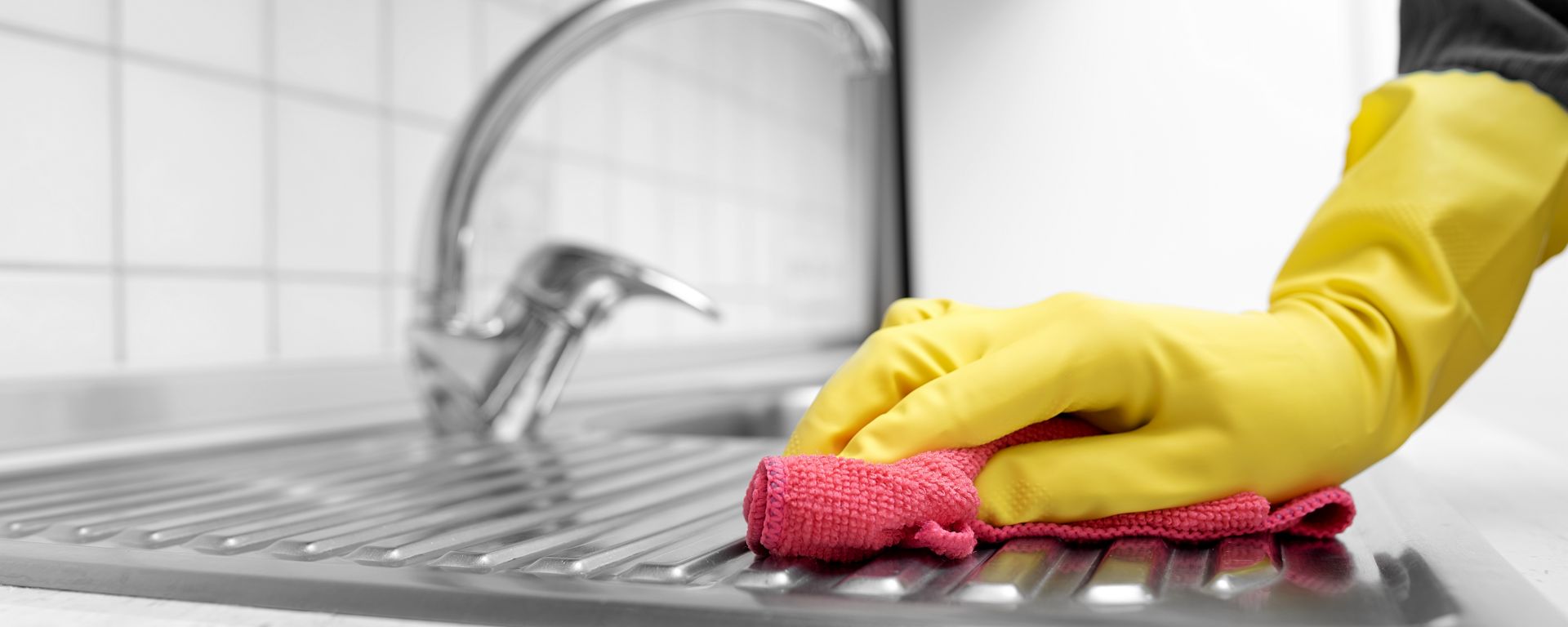You may clean your kitchen like a professional, but sometimes the kitchen sink and drain may not get the same treatment they deserve. Many of us wash things in the sink and rinse afterwards, so it’s easy to naturally assume that the sink is clean, or being cleaned as you go. But, the truth is that the kitchen sink is filthy and full of germs. As the sink gets full of dishes, pots and pans, grease, food particles and other sorts of bacteria make a film on your sink, resulting in a germ-infested breeding ground for mould and bacteria.
There are so many germs in and around the kitchen sink that it’s said to contain more faecal matter than a flushed toilet. This means your kitchen sink could be the dirtiest place in your home. The amount of germs in a kitchen sink is a concern, but luckily, getting rid of all those germs isn’t too tough. All you will need is baking soda, white vinegar, and dish soap to scrub away the bacteria, germs and residue. The most important thing when it comes to cleaning the kitchen sink is to frequently drain enough contents to prevent build-up, bacteria and odours. Here you will learn how to clean a kitchen sink and keep it fresh.

How To Clean A Stainless Steel Sink
To clean a stainless steel sink, you’ll need baking soda, distilled white vinegar, and some good scrubbing. Baking soda is an all-around natural cleaner that is safe for use throughout your entire home and is safe for use on stainless steel. White vinegar is also an effective natural cleaner, a disinfectant, and safe for use on stainless steel sinks and many other surfaces and fabrics.
For your kitchen sink, you’ll need these natural cleaners, a nylon brush, and an old toothbrush to make your stainless steel sink shine again.
- Start by rinsing your sink with hot water and dish soap.
- Then sprinkle baking soda all over the entire sink.
- Use a soft scrub brush to rub the baking soda in the direction of the grain.
- Next, use the toothbrush to get around the drain hole and other small, tight areas.
- Spritz distilled white vinegar over the whole sink.
- Once the fizzing reaction stops, rinse the whole sink with hot water.
- Dry the sink thoroughly with a microfiber cloth, then use a dry microfiber cloth to buff the stainless steel sink.
How To Clean A White Kitchen Sink

A white kitchen sink will, unfortunately, show rust and splatters of food, not forgetting the coffee and wine stains. Hydrogen peroxide and baking soda helps get rid of stains and brings your sink back to its original state.
1. Apply Cleanser And Scrub
Start by patting down the sink with a wet cloth so that it’s damp, then sprinkle baking soda into the sink so that it’s completely covered. Then add a couple of drops of hydrogen peroxide and use a scrub or brush to begin scrubbing the whole sink.
2. Drain Then Dry
Once your sink is completely cleaned, run the tap and let everything drain down the sink, then use a dry cloth to dry the sink.
How To Clean A Porcelain Kitchen Sink
Glossy porcelain sinks are susceptible to rust and stains just like white sinks. You can use the same method to clean your porcelain sinks as white sinks, but you may want to use a different technique to remove rust and protect its finish.
For this method, you will need lemon, salt, soapy water and a microfiber cloth.
1. Treat Rust Stains
Sprinkle salt on half of the cut lemon and scrub it directly onto the rusted area until the stain is worked out.
2. Rinse And Dry
Rinse the sink clean with warm soapy water, followed by a thorough dry with a microfibre cloth to dry the sink.
Taps And Handles

All sink taps and handles can be cleaned using plain soapy water, no matter the material of the sink or taps. Simply use a sponge or brush to wipe them down and a toothbrush for those small hard-to-clean areas.
If there are still noticeable white spots after scrubbing, that is lime buildup from the minerals in the tap water. Add a spoonful of vinegar to the soapy water and do the last scrub of the sink and all its features.
Clear The Drain
The smell of the kitchen should be inviting, not make you want to leave. Use this method to clean a kitchen sink’s drain to help you get rid of those unwanted odours. You can clean the drain by using three different kitchen staples that are probably already on hand.
Baking Soda And White Vinegar
Baking soda and white vinegar together are one of the best home remedies for more than just bad smells, and also work well for unclogging drains. All you need is baking soda, white vinegar and boiling water.
1. Pour The Mixture Down The Drain
You will need one part baking soda and two parts white vinegar. Pour the baking soda down the drain, then slowly add the white vinegar. Wait 15 minutes for the fizzing reaction of the vinegar and baking soda to work.
2. Add Boiling Water
Pour boiling water into the drain to remove any remaining residue.
Now that you know how to clean your kitchen sink, you can be sure that your entire kitchen is clean and safe for the entire family. Don’t forget to clean your bathroom sink too. If you don’t get the time to clean your kitchen or the kitchen sink, you can book a professional kitchen cleaning service with SweepSouth to ease your worries.








